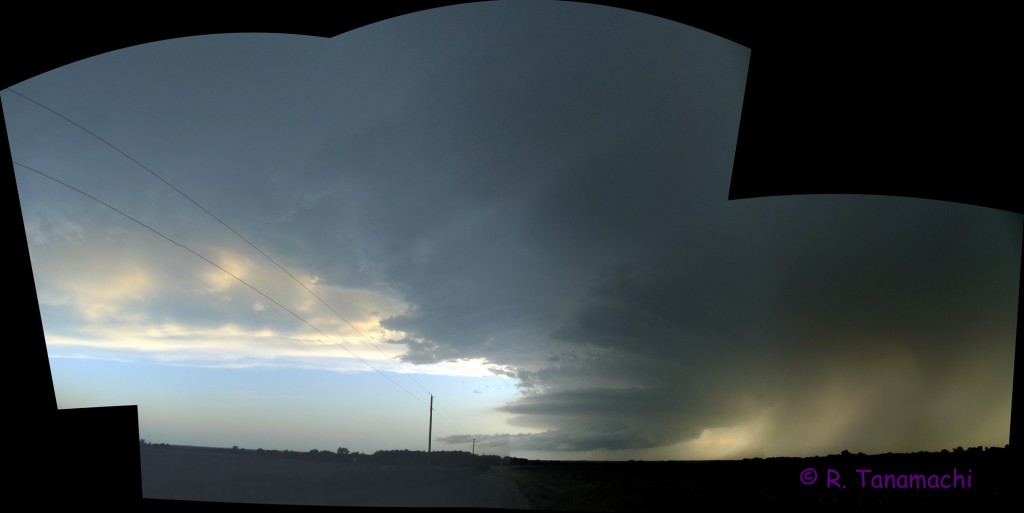Okay, I know this is supposed to be a blog about my severe storms research. But the Japan earthquake, tsunami, and now nuclear disasters have all hit rather close to home. That’s because Japan was home for me, for the summer of 2005. Japan is the country where I had to re-learn how to go to the bathroom, how to go shopping with the vocabulary of a three-year-old child, and where I joyfully re-established contact with my extended family on my father’s side. I sweltered in the Tokyo summer heat, shouted over deafening cicadas, slurped down bowls of Hakata ramen, and felt the gentle jostle of the trains that took me anywhere I wanted to go. The perpetual chimes and recorded announcements, the exquisite artistry and fashion, the delicate palette of flavors, and the gamut of emotions I experienced in Japan are all packed into a treasured space in my memory. Occasionally, they resurge into my consciousness, stimulated by a taste or a sound. I cherish those memories even more so now that substantial portions of Japan have been changed, many irrevocably.
It’s not like I ever got to visit or travel through any of the areas of northeast Japan that have been wiped away by the tsunami, or that will probably be contaminated for decades by radiation from exposed nuclear waste. (The latter situation is still unfolding as I type this.) It’s not as if I personally knew any of the victims swallowed by the mass of black water and debris that surged horrifically across the perfectly gridded and manicured farmlands of Sendai, crushing house after house in the seaside towns. (My relatives are all on Kyushu, in the southwest, well away from the disaster zone.) I don’t know these places, and yet, somehow, I do. I barely even know the Japanese language, so I have been having to rely on NHK’s own halting English interpretations of their local coverage. I’m not going to pretend to have any particularly apt insight into the Japanese psyche and how it might respond to this compound disaster. What I see is a land I am very fond of, facing its greatest crisis of the modern era. I am sitting comfortably in Norman, Oklahoma, hard pressed to do anything about it. So I think, and write.
Japan erupted (quite literally) out of the ocean when the spine of the Pacific plate butted up against an extension of the North American plate. As a result, the distinctive landscape, with its severe grade and some active volcanoes, is largely uninhabitable, so most people amass around the coasts and in small mountain enclaves. (My own last name, Tanamachi, translates as “shelf village,” in reference to a gently sloping locale on one of these mountainsides where a small contingent managed to get a foothold.) The open fetch of warm ocean to Japan’s south and east provides ample moisture that makes Tokyo a concrete sauna in July and August, but also helps the rice crops growing in the rich volcanic soils to flourish, and fills the surrounding sea with all manner of delectable creatures. The same warm ocean is also fertile ground for the formation of monstrous typhoons. Japan is rocked from beneath by earthquakes and volcanoes, while tsunamis and the ferocious winds and rain of typhoons try to erode Japan back into the ocean from above. It is no wonder that the predominant religion (Shinto) is an animist one – the very earth on which Japan was born is very much alive, and voracious. The other major religion, Buddhism, teaches that life is suffering, and that nothing is permanent.
Time and again throughout history, Japan has seen its cities and people consumed by disasters, and often had to rebuild from scratch. Communities and entire families could be wiped out in a few seconds, historical sites and documents lost forever. Disaster preparedness is ingrained into Japanese culture. Everywhere you go in major cities, signs in many languages point the way to earthquake and tsunami refuge areas. Very small children learn songs and games that teach what to do in an earthquake. The word “tsunami” is itself a Japanese word. On the island of Amami-Oshima in 2005, I watched a city (Naze) hunker down for the passage of a Category 4 typhoon, then resume business as usual the very next day after cleaning up only a few leaves and bits of windblown trash.
The Japanese were certainly not caught unprepared by last Friday’s earthquake. They have learned the lessons of history well, the pain of loss forging links to generations past and future. The billions spent on earthquake-resistant buildings (which I mentioned in my last post) and evacuation procedures doubtless saved thousands of lives. The tsunami was different story. One cubic meter of water weighs 1000 kg, or about 2200 lbs. Knowing this, one can begin to comprehend the destructive power of a 10 m-tall tsunami crashing ashore. Most human-made structures simply buckled under the lateral strain and washed out to sea. The only effective survival strategy was an uphill escape.
The world knows that the Japanese work hard, and play harder. But the earth is continually trying to shrug Japan off, often with devastating consequences for its human inhabitants. In light of this fact, the seeming Japanese national mania for novelty, technology, and connectivity may be a little bit more understandable. What would you do today, if you knew you might not be here tomorrow?






